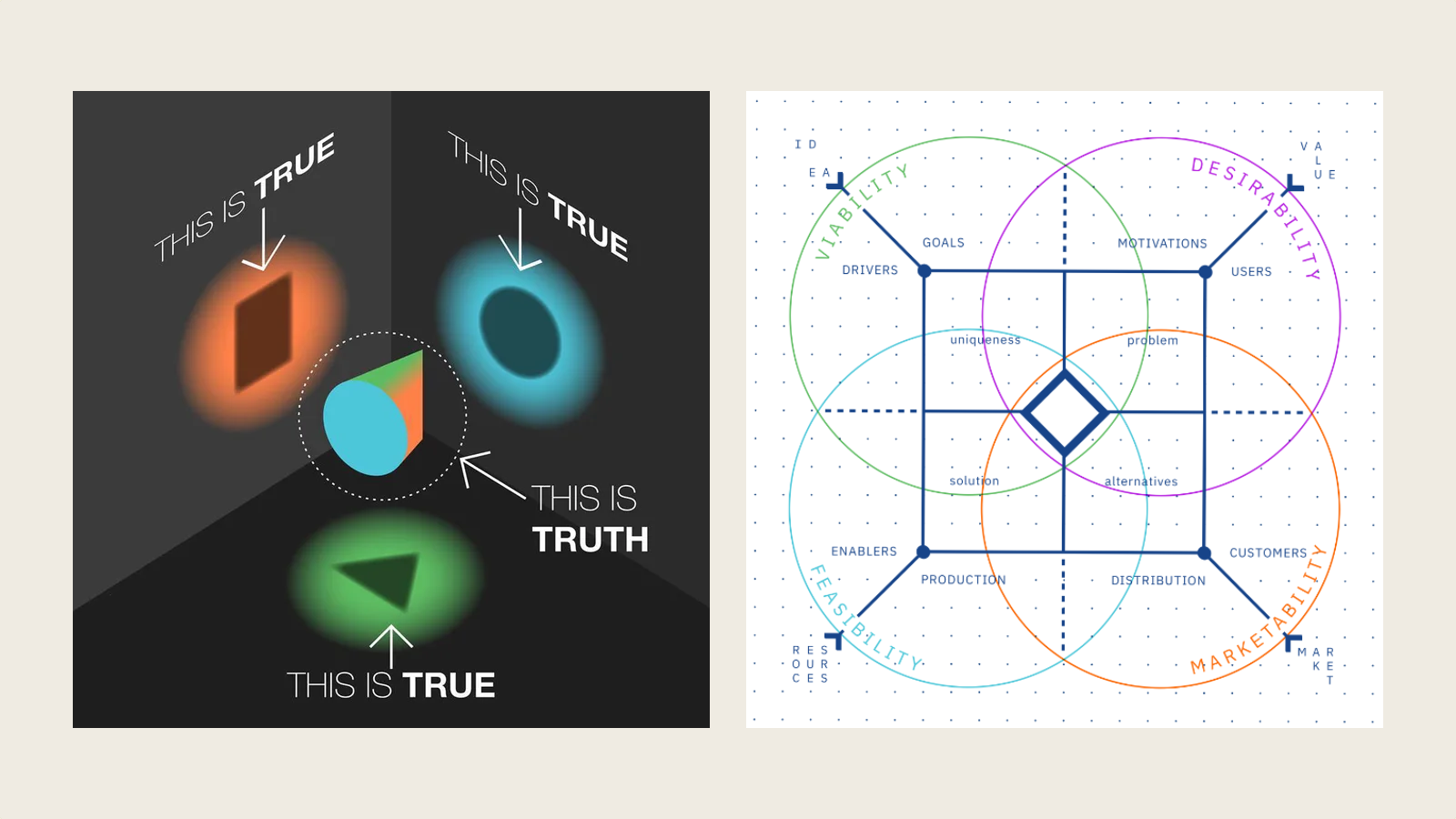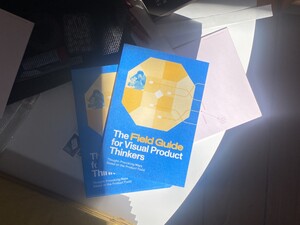Visual Thinking for Product People
Collaborating on products and thinking about product strategies needs visual thinking. Visual thinking not only helps to grasp complexity better than reading a linear text, it also opens your mind to other perspectives.
The visual form of The Product Field framework is based on a simple coordinate system that helps product teams to think together.

The Product Field establishes a shared language and coordinate system for product strategies. Its visual form is that of a mandala. According to the Groups Graphics Keyboard and research from the 1970s a mandala is well suited to “visualize gaps and unities under a diversity of perceptions.” (Sibbet, 2018).
A coordinate system to represent innovation […] needs to cross several disciplines and domains.Horst Rittel
Horst Rittel already knew: “A coordinate system to represent innovation must be primitive. That is the price of generalization. Hence, it needs to cross several disciplines and domains. It might miss some contributions, but the objective is to find a unified frame of reference.” (Protzen, 2010).
A Unifying Frame of Reference
The Product Field establishes such a unifying frame of reference.
It helps you to let everyone contribute to the product strategy. When building digital products, many disciplines and roles are involved. As a product person in a mid-size or larger organization, it is easy for you to come up with a list of 20+ names of people who contribute to the success of a product. Think of executives, business development, product management, engineers, editors, marketing, sales, legal, growth hackers, conversion copy-writers, designers, UI, UX, R&D, support people.
How to organize their contributions that influence the strategy? How to organize and connect their beliefs, knowledge, and insights - all signals and noise that you hear every day?
The Product Field offers a visual form that reflects the core activities of innovations — the realization and introduction of new products. Its visual form helps to organize tons of information and knowledge regarding a specific product or service. There is a defined position — a point — for each contribution. And while everyone contributes from their perspective, the coordinate system helps to put all the many, many true parts together. This is how product teams build an actual whole, layered, complex truth that informs their strategy.

People add information as cues. Cues are simple sentences, familiar structures, like seeds from which people develop a larger sense.
To make that knowledge productive, we will have to learn to see both the forest and the trees. We will have to learn to connect.Peter Drucker (1993)
The coordinate system supports the connection of information in the form of cues. Similar cues are close to each other. Meaning is created when cues are linked with "well-learned and/or developing cognitive structures.” (Weick, K. E., 1995).
Linked cues help to describe “what is” and “what ought to be”, core elements of every product strategy. This understanding is visually organized and represented as a concept map. Concept maps help to see the “big-picture” and understand relationships. The Product Field is a coordinate system that gives all contributors and participants spatial orientation and therefore speeds up collaborative knowledge modeling as well as comparability between different concept maps. It allows everyone to grasp the inherited complexity of innvoation better than reading a linear text and it also opens everyone's mind to other perspectives and valuable contributions by team members.
As my eyeglasses don’t see on my behalf but help me see better, one might use the computer not to think on one’s behalf, but to reinforce and enhance one’s ability to think.Horst Rittel
We are building Field to make it super simple for product people to create maps that contain all elements of a balanced and well-thought-through product strategy. Field enhances not only an individual’s, but a teams’ ability to think.
And for those contributors who don’t care about complexity? We made it astoundingly easy for product leaders to let everyone contribute, without becoming “crazy map” experts.

Starte deine zielgerichtete Field Testphase mit einem unserer Product Coaches. Oder buche eine persönliche Demo Session.
References
Drucker, P. F. (1993). Post-capitalist society.
Frahm, K.-P., Schieben, M., & Wopperer-Beholz, W. (2016). The Product Field Reference Guide. http://read.productfield.com
Protzen, J.-P. (2010). The Universe of Design: Horst Rittel’s Theories of Design and Planning. Taylor & Francis.
Sibbet, D. (2018). Visual Consulting. John Wiley & Sons.
Weick, K. E. (1995). Sensemaking in Organizations. SAGE.




